Hitler's carts in Moscow
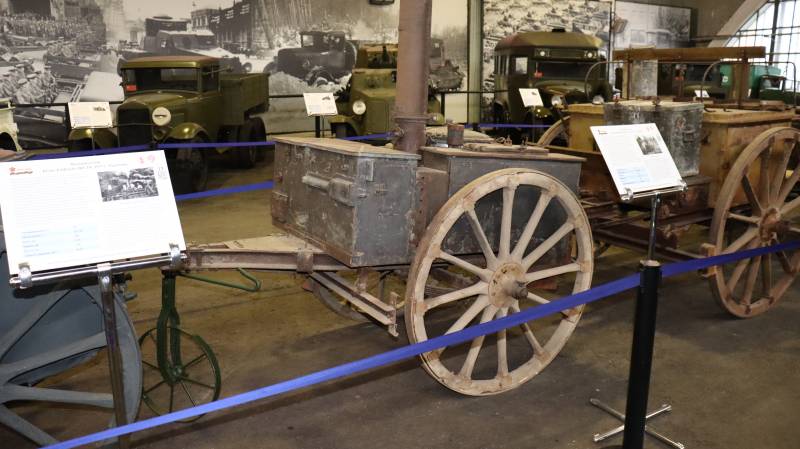
Field kitchen Kleine Feldkuche (Hf.12) from the collection of the Museum "Motors of War". Photo of the author.
Wehrmacht horse traction
They still reached Moscow. More precisely, we got to the restoration workshop of the Motors of War museum of military equipment, and then to the exposition itself on Rogozhsky Val. We are talking about unique examples of technology of the "axis" countries. And this is in addition to the rarest examples of domestic cars, many of which are on the move and exist in the singular.
The Motors of War exhibition opened in December 2021 on the site of the Museum of Vintage Cars, and it features more than 150 exhibits of interest to anyone who cares story Second World War. A considerable part of the artefacts has been restored to its proper condition by Vyacheslav Len's workshop.
For most visitors, a real discovery will be a large assortment of German horse-drawn vehicles. Contrary to popular myth, the Wehrmacht was not thoroughly motorized - each infantry division was supposed to have at least 6 horses. Hence the prevalence of Hitler's wagons, carefully restored by the museum's masters.
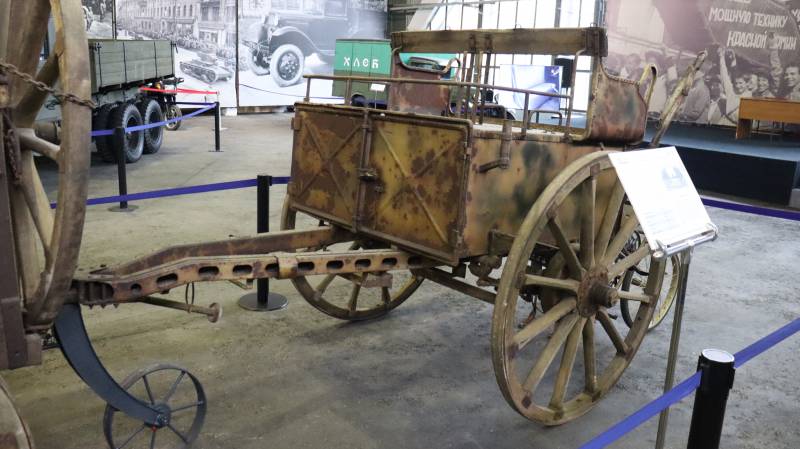
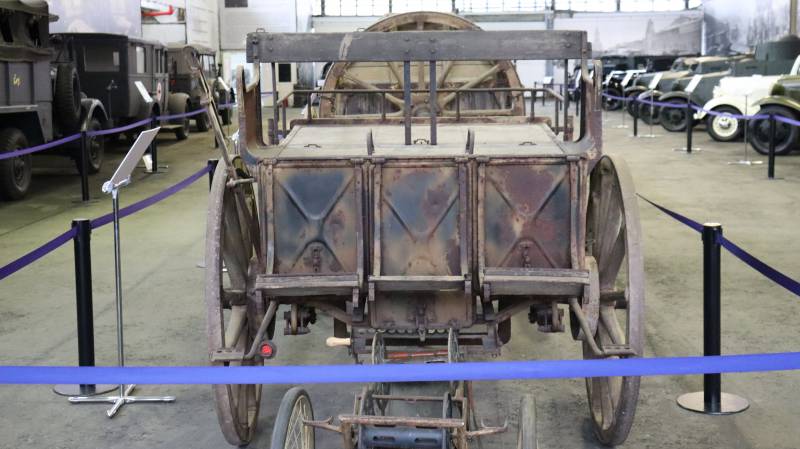
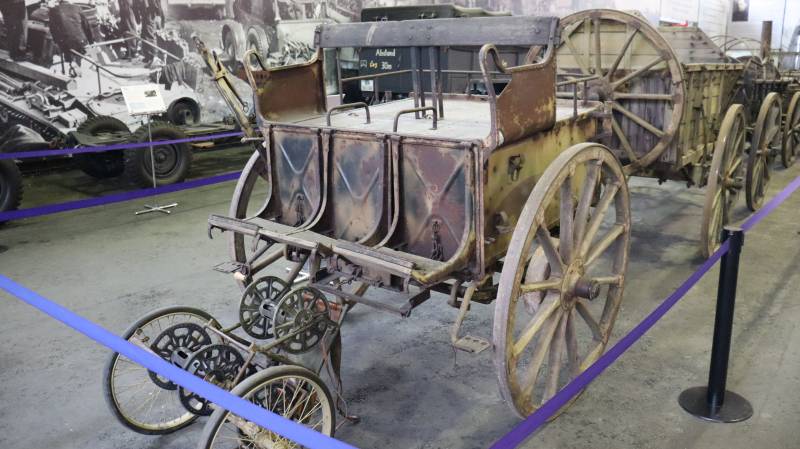
Leichter Fernsprechwagen (lightweight telephone car) model 1929. Light wagon Kleine Heeresfahrzeug 3 (Hf. 3). Author's photo
It’s worth starting with a signalmen’s wagon with the traditionally long German name Leichter Fernsprechwagen (light telephone car) of the 1929 model. The design consists of the trailer itself and the front end to it with a total curb weight of about 740 kg. It was possible to load up to 580 kg into the "telephone car". Four horses had to pull such a weight - the cart was designed for a maximum speed of 20 km / h. The Germans operated this technique until the very end of the war, and the copy presented at the exhibition fell into the hands of the Allies in Normandy in 1944.
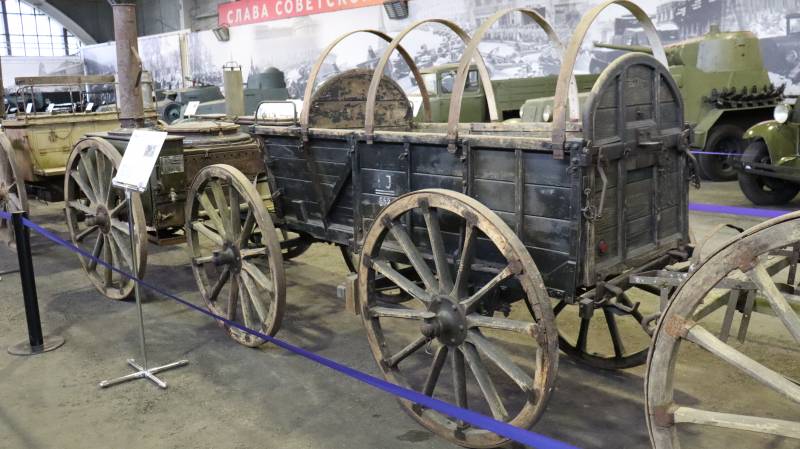
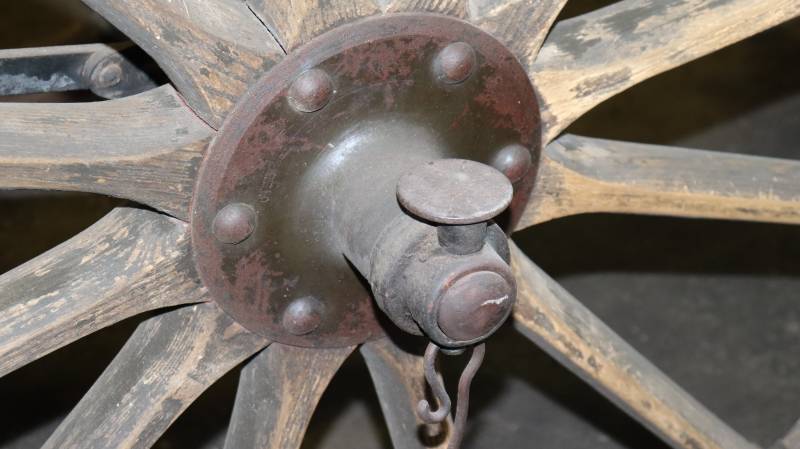
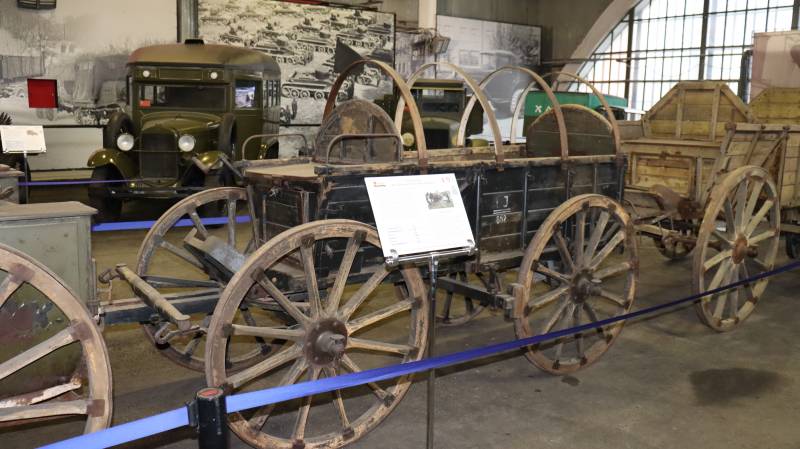
Light wagon Kleine Heeresfahrzeug 3 (Hf. 3). Author's photo
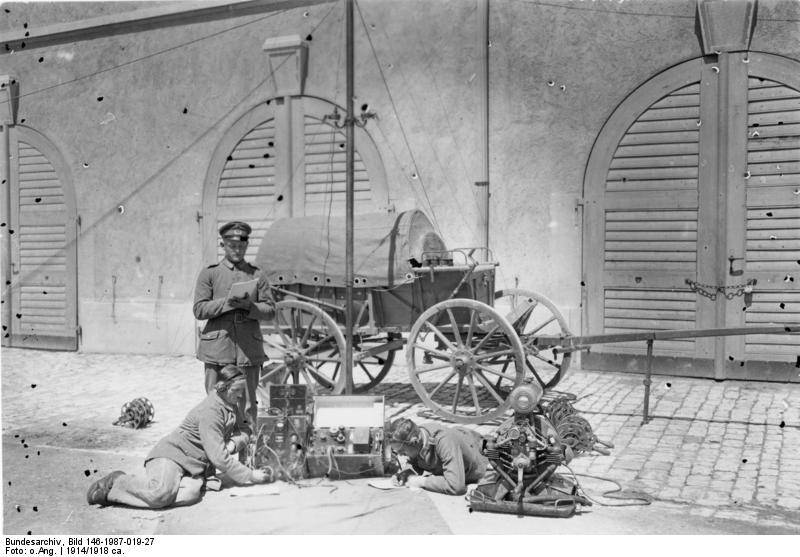
The cart of signalmen in the deployed position. World War I
The Kleine Heeresfahrzeug 3 (Hf. 3) light wagon is also related to signalers. The Wehrmacht operated at least five cart modifications, two of which were Hf. 3/1 and Hf. 3/2 were intended for the needs of army communications. The designs were distinguished by springs that soften the course of the wagon - after all, radio engineering required an appropriate attitude.
The cart can be called a real veteran of the German army. The first copies appeared during the First World War and then migrated to the Wehrmacht almost unchanged. In 1936, the wooden arches for the awning were replaced with steel ones.
Usually Kleine Heeresfahrzeug 3 was pulled by two horses, and you won’t envy them - the total mass of the unit could exceed a ton. On a flat road, like the signalmen's wagon mentioned above, a wooden cart could accelerate up to 20 km / h without consequences.
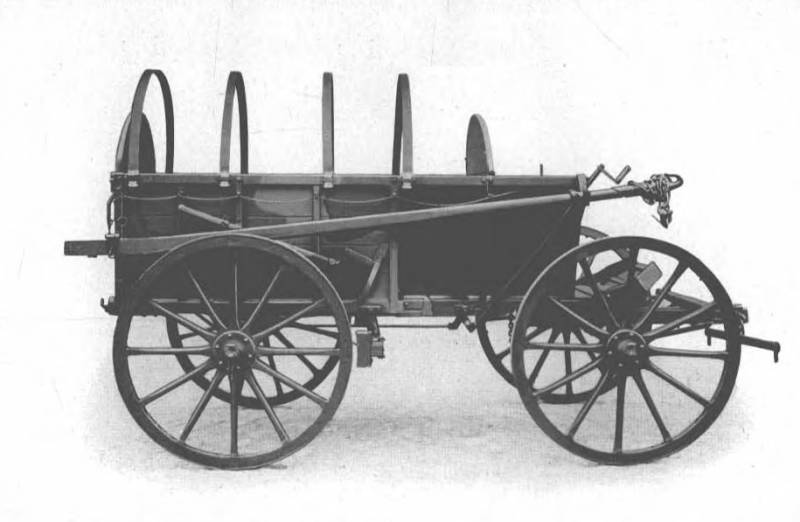
Cart Heeresfahrzeug 1
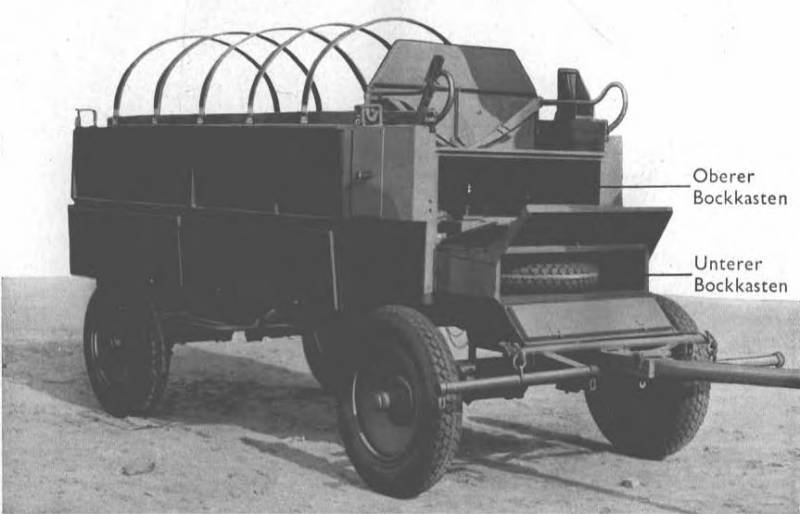
Heeresfahrzeug 7, nicknamed the "horse killer"
If there is Heeresfahrzeug 3, then there should be Heeresfahrzeug 2 and 1. This is true, but the rest of the German cart line is missing on the Engines of War. One can only say that Hf. 1 was a light cart, the roots of which go back to the development of 1895.
By the beginning of World War II, each Wehrmacht rifle platoon was supposed to have one such wagon. The heavy field wagon Hf. 2, designed to carry 800 kilograms of cargo and a team of four horses.
The all-metal Heeresfahrzeug 7, accepted for supply in 1937, can be considered the pinnacle of German telegostroyenie. Real high-tech for its time - pneumatic or molded rubber wheels, the ability to hitch with a car, as well as an outstanding load capacity of one and a half tons with a curb weight of 1 kg.
But the products turned out to be good only on well-groomed tracks in Europe, where a pair of horses coped with transportation. On the Eastern Front, even four strong horses did not pull a heavy cart in muddy conditions. Therefore, previously withdrawn from the supply of Hf. 1 the Germans quickly got out of the storerooms. And Heeresfahrzeug 7 got the nickname "horse killer".
Narrow specialization
The field kitchen Kleine Feldkuche (Hf. 12) was probably the most coveted on the German front. It consisted of a rear carriage, assembled from sheet steel, where two boilers of 125 and 60 liters were placed. The first for hot food, the second for tea or coffee. Often they hitched the front carriage with provisions and trays of dishes. The wheels were unified with the younger models of the Heeresfahrzeug series carts. According to the information plate on the exhibit, the Germans often removed field kitchens from the wheel drive and loaded them onto trucks. So the problem of low mobility of horse-drawn carts was solved.
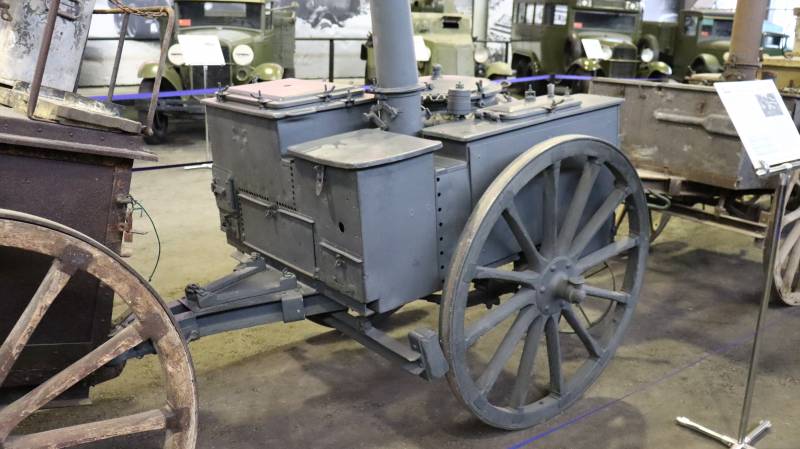
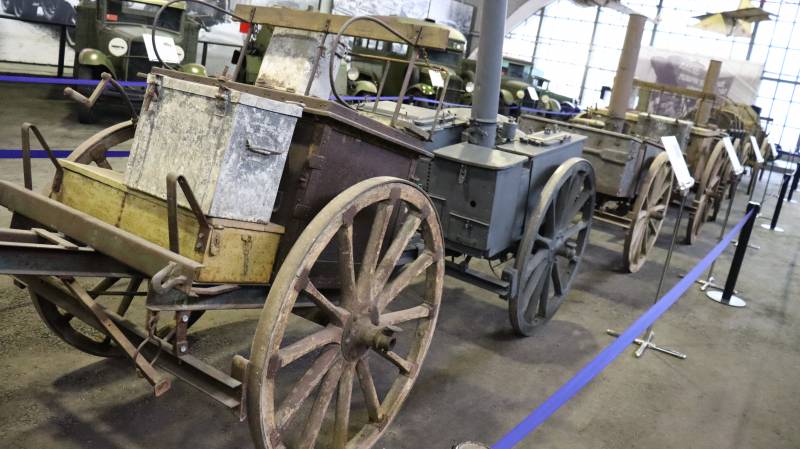
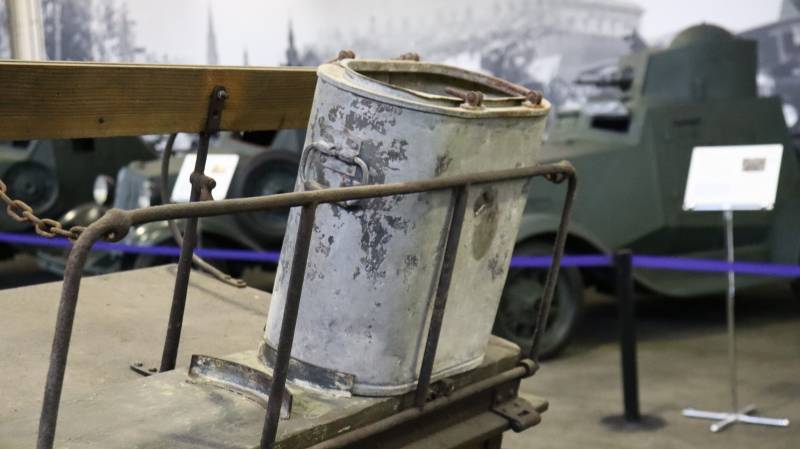
Field kitchens Kleine Feldkuche. Author's photo
One of the most interesting exhibits of the Engines of War is, of course, the horse-drawn Infantriefahrzeug 5 MG Wagen 36 anti-aircraft trailer. Typically, such carts were attached to infantry battalions to fight enemy aircraft.
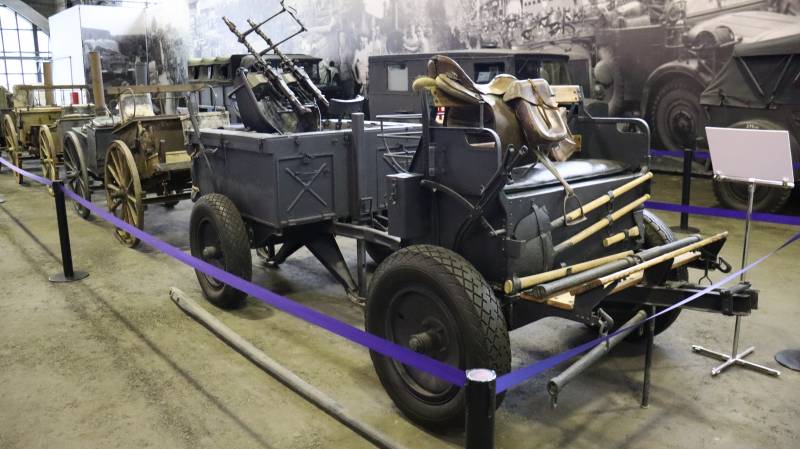
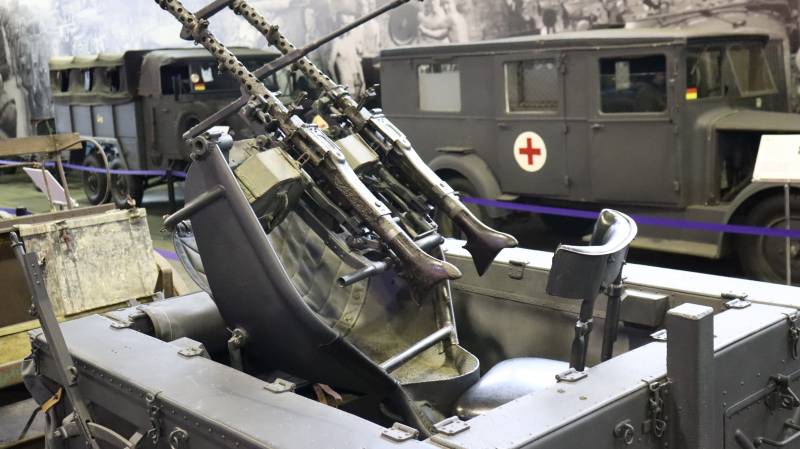
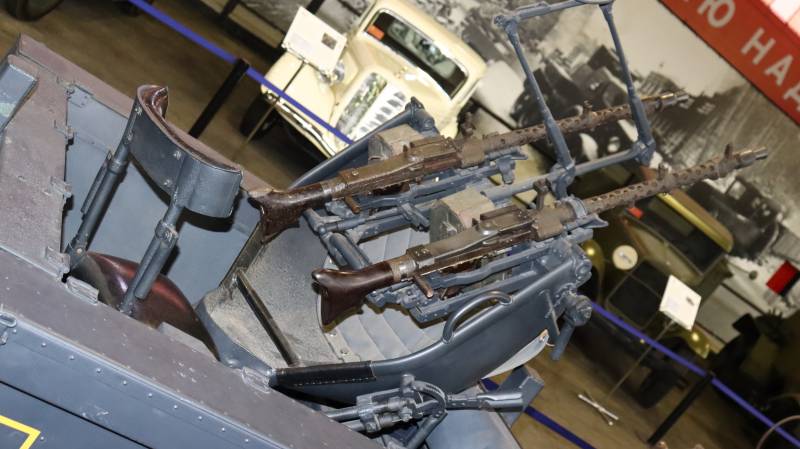
Anti-aircraft trailer of the Nazis in the Museum "Motors of War". Author's photo
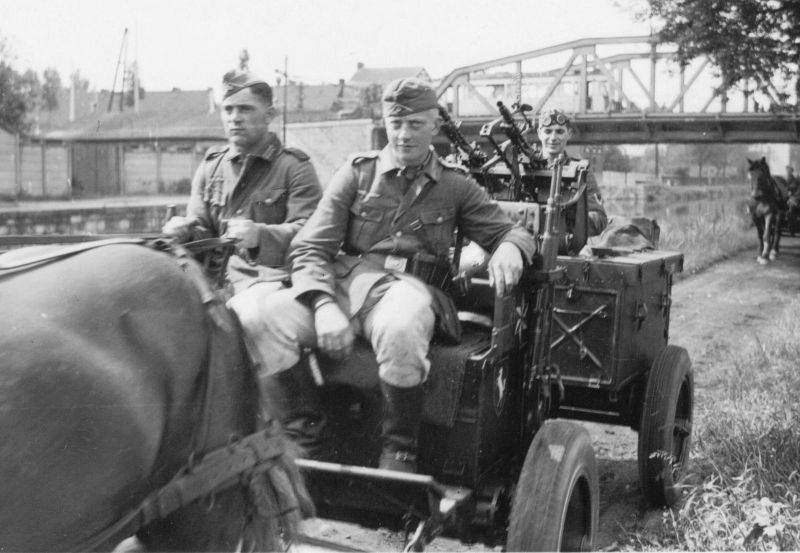
An Infantriefahrzeug 5 MG Wagen 36 in its natural habitat on the Eastern Front.
Compared to previous carts, this is a fairly recent development - the first carts appeared in the mid-30s. Hence the progressiveness of the design - pneumatic wheels and an all-metal body. This made it possible to accelerate the cart up to 30-40 km / h, as well as towing it by road. Firepower was provided by a pair of MG 34s and appears to have been overkill for a half-ton cart.
Not only could the rear carriage be turned over in long bursts, but the machine-gun twin was mounted offset relative to the longitudinal axis of the cart. Even the retractable supports did not help. As a result, If. 5 MG Wagen 36 was either turned into a fixed anti-aircraft gun, or removed from the wheel and loaded into a car body. As the information plate says, the presented exhibit was abandoned by the Germans near the village of Arzhaniki in the Smolensk region.
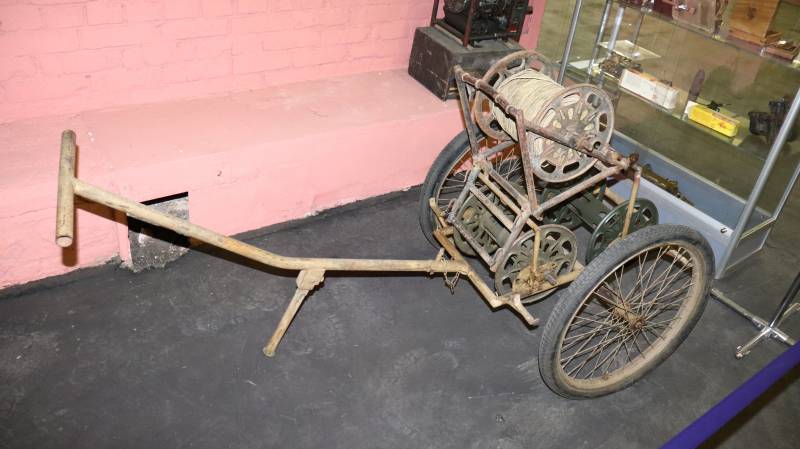
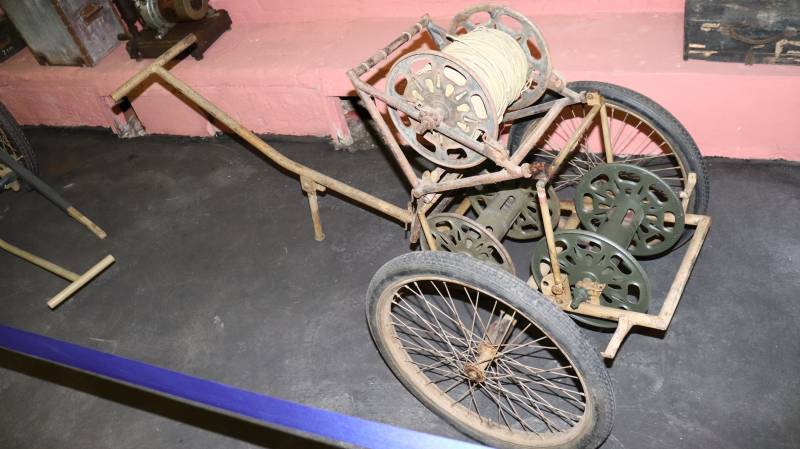
Hand cart signalmen model 1942. Photo of the author.
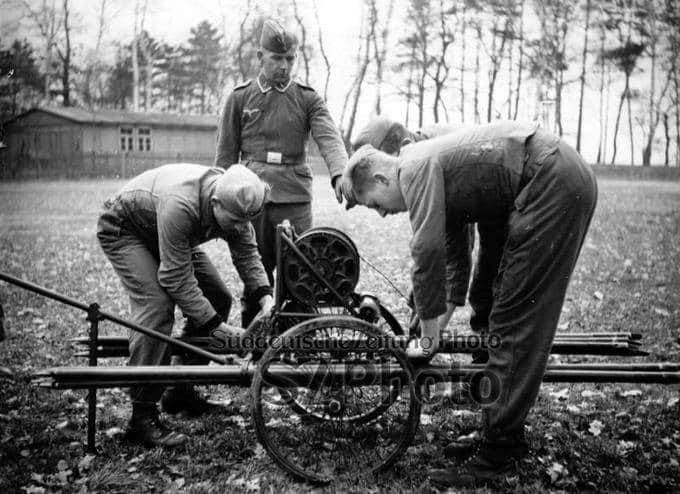
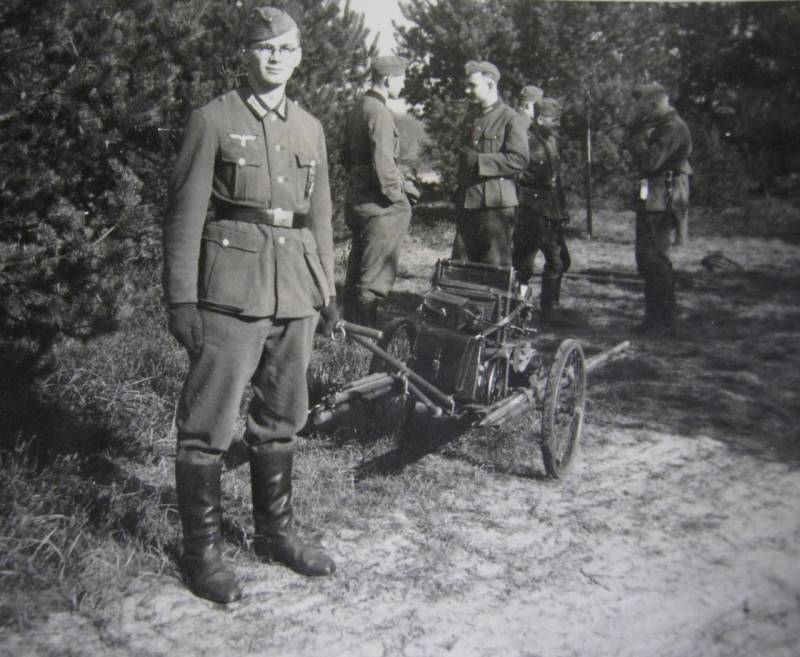
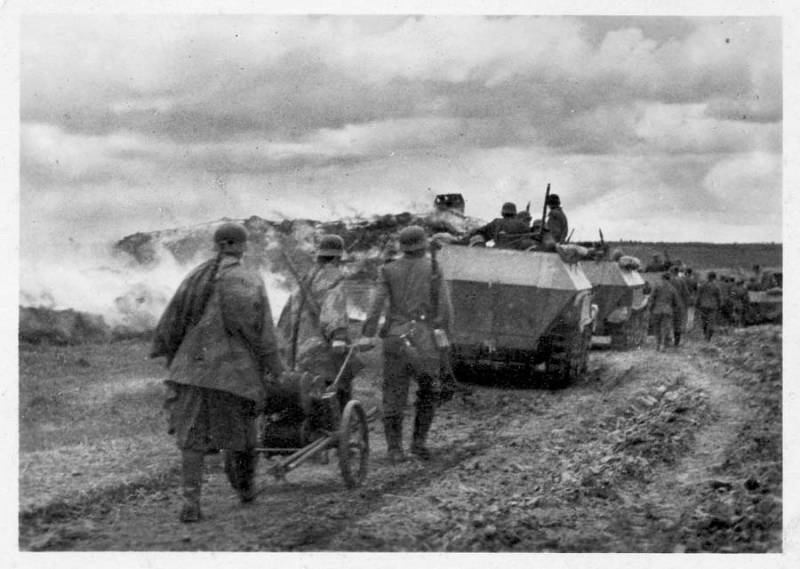
There are not many archival photographs of Nachrichtengeratkarren left.
Next in line was a 1942 signalmen's cart under the unpronounceable name Nachrichtengeratkarren. The Nazis dragged her like rickshaws behind them, since the mass did not exceed 50 kg. Usually, up to three drums with a kilometer field cable, grounding tubes and other belongings of a signalman were loaded onto the product. Often the cart could be seen in the configuration of a heavy telephone car - schwerer Fernsprechkraftwagen.
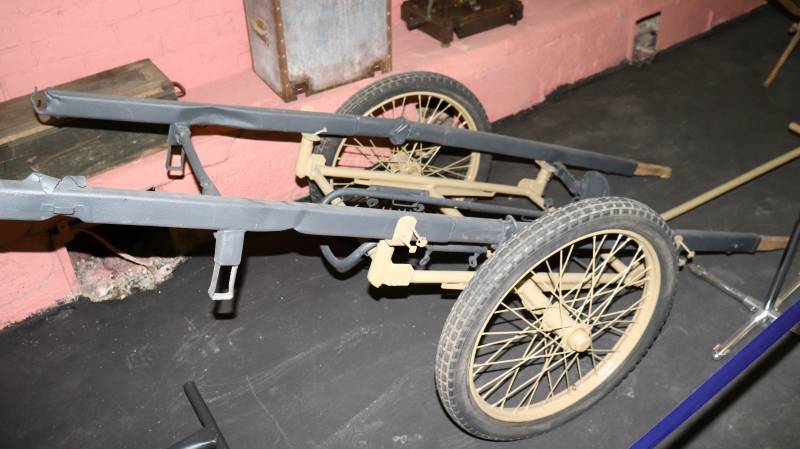
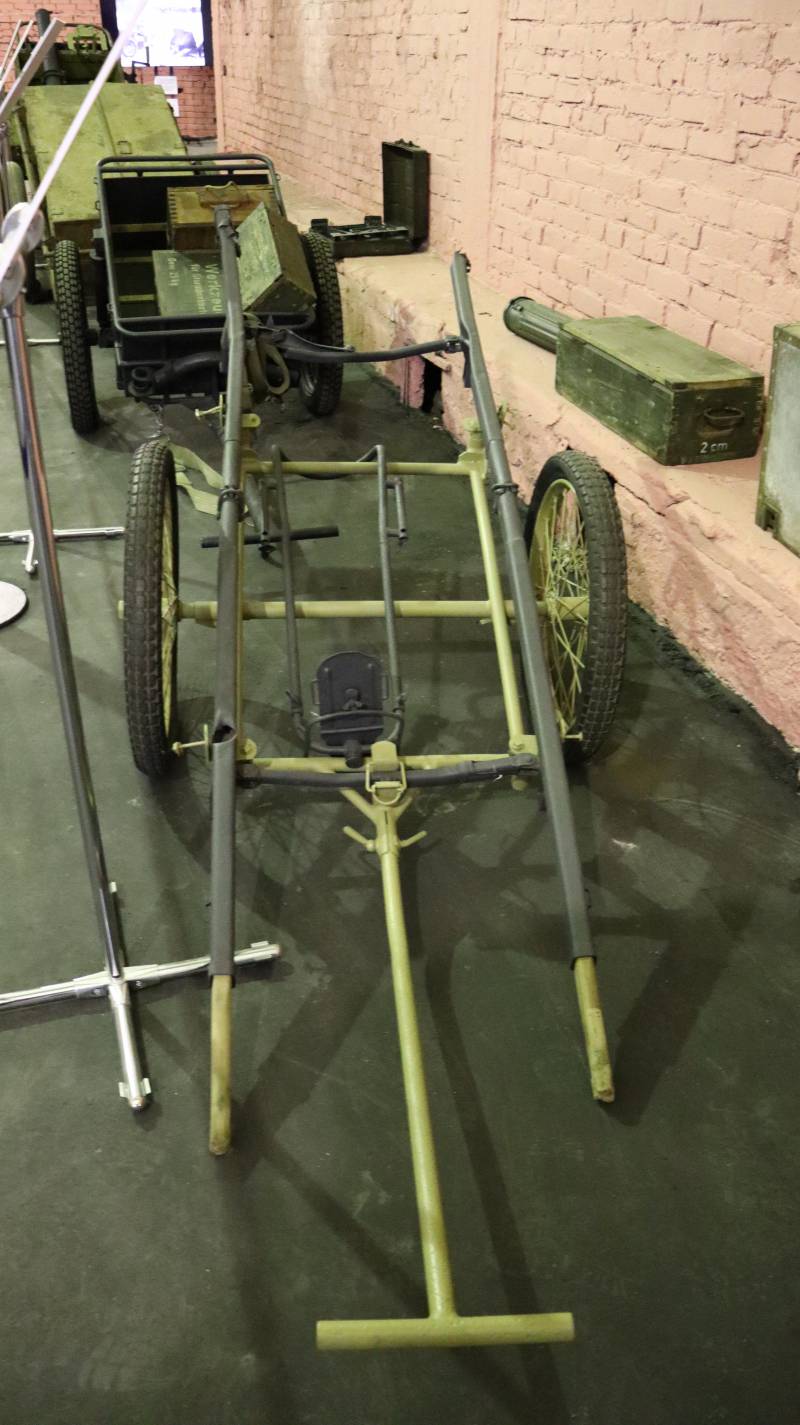
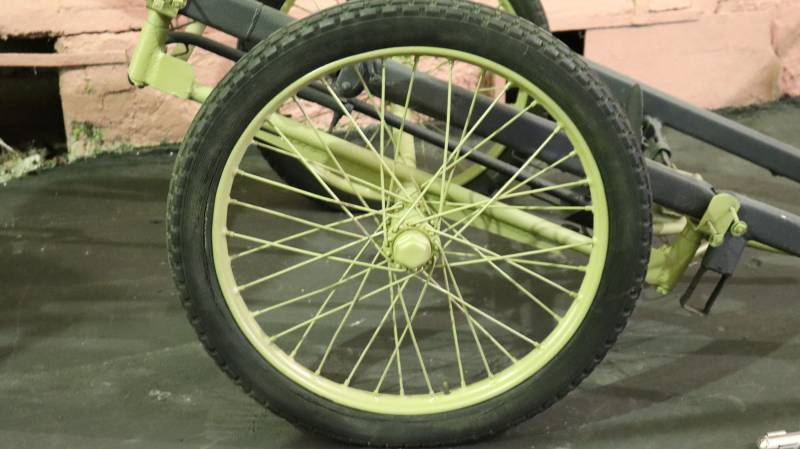
Manual ambulance cart of the Wehrmacht. Author's photo
One human force was also required to move the Handkarren fur Sanitatgerat of the 1942 model of the year - a cart for evacuating the wounded from the battlefield. The chariot could be equipped with a box of medicines, and the total load capacity reached 150 kg. At the moment, not many photographs of this rarity have been preserved, not to mention real specimens. The trolley on display dates back to 1944.
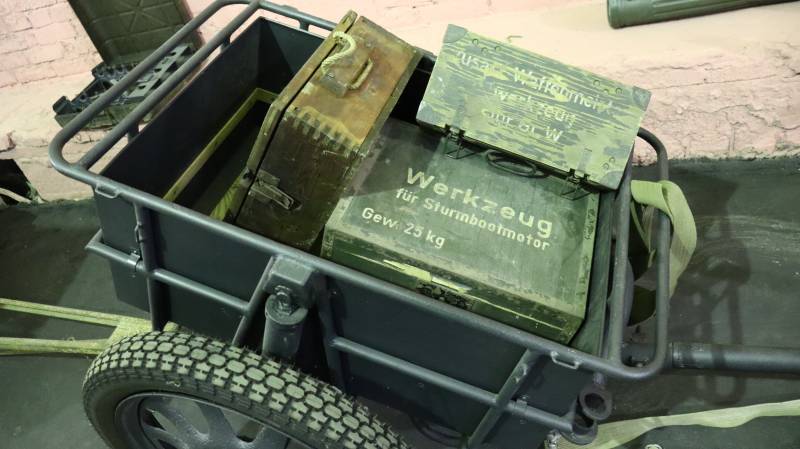
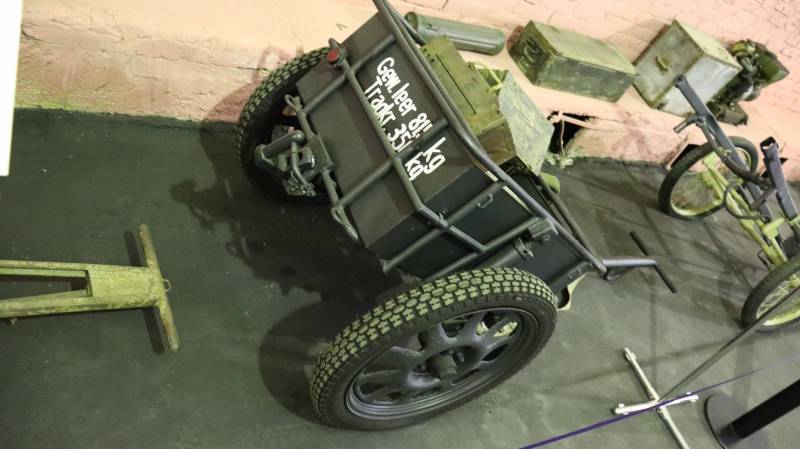
Universal Infanteriekarren If. 8. Photo of the author

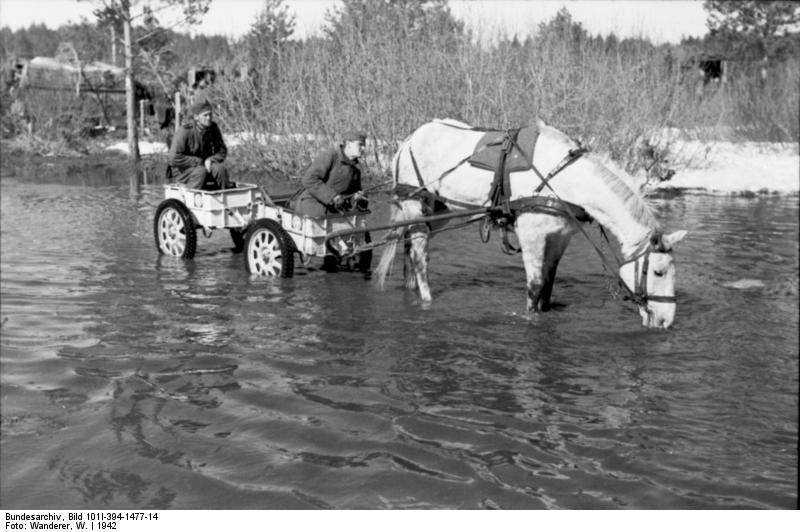
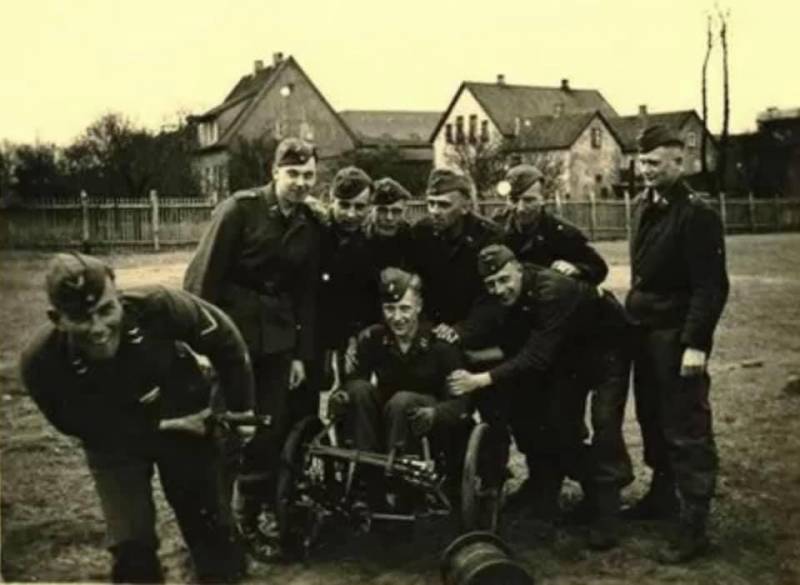
Examples of using a light trailer
Universal light trailer or Infanteriekarren If. 8, the Nazis could pull on their own, but it’s better to entrust a loaded 400-kilogram cart to a horse. Or a motorcycle or even a dog sled. The cart relied on each infantry platoon and was widespread in the Wehrmacht. Of course, they were transported to If. 8 everything you need - from ammunition and mortars to food and medical supplies. The design is strong enough and allows you to hitch several loaded carts in series to the tractor.
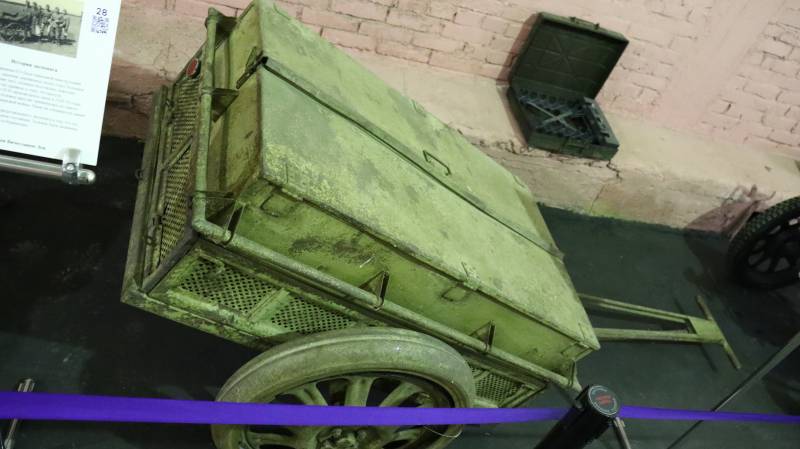
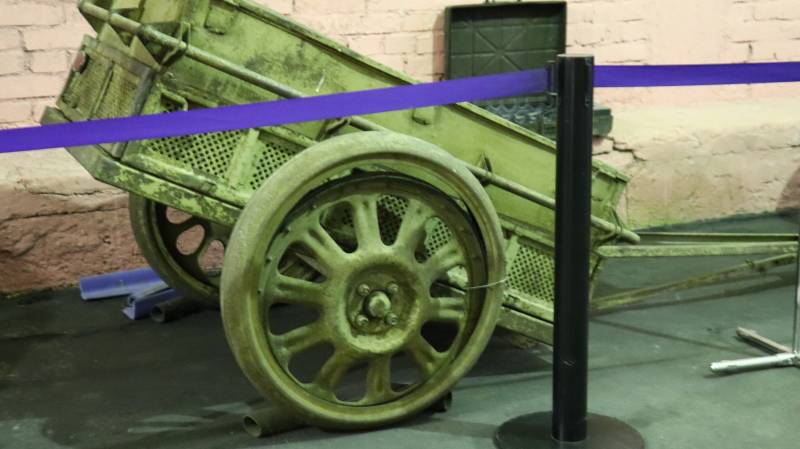
Rare Pionerhandkarren cart (Pf. 22). Author's photo
The sapper cart Pionerhandkarren (Pf. 22), on which the Nazis usually transported infantry flamethrowers, is close in design to the trailer described above. Due to its narrow specialization, Pf. 22 was not widely used and, according to the information plate, was not distinguished by a successful design. The presented copy fell into the hands of the Allies in 1944 in Normandy and was not restored - traces of the original paint still remained on the cart.
The unique exposition of "Motors of War" not only expands the horizons of knowledge of the interested public, but also dispels the widespread myth of the Second World War about the total motorization of the Wehrmacht. As it turned out, the Germans had to load the lion's share into horse-drawn carts, and sometimes harness themselves.
Information